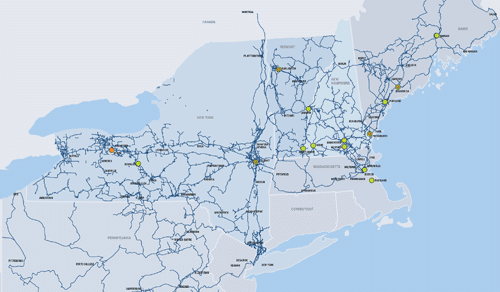Keeping your data flowing, and your business humming, requires a secure and reliable connectivity solution. A local area network (LAN) works well for a single location business. However, as your business grows, expanding into new areas and new locations, connectivity becomes more challenging.
A wide area network (WAN) can provide fast and secure communication between offices, even if they are located far away from each other. Certain aspects of a WAN can be costly, but there are ways to trim those costs so that they are affordable. This article will discuss the pros and cons of wide area networks.
A Quick WAN Summary
Given the wide availability of Internet access solutions, some businesses use email and file sharing tools as their primary means of communication. Eventually, though, a successful business will likely require a more robust data network. That is where a WAN comes in.
A WAN allows remote locations to connect with their company’s main headquarters (the LAN) and each other. The data you send from the WAN is not viewable or accessible to anyone outside your own organization, like it could be if sent via the Internet.
With that in mind, let’s look at some of the pros that a WAN offers your business.
Advantages of a WAN Solution
Privacy and Security: As mentioned above, a WAN provides a direct, dedicated connection through which your data can pass. This limits opportunities for others to intercept your data as it is in transit between locations. The bottom line? WANs offer a distinct privacy and security advantage.
Network Performance Consistency: Equally important, your data does not have to compete with other Internet data for bandwidth as your communications travel between destinations. You get continuous access to all the bandwidth you are paying for. This allows your business to avoid throughput lags commonly experienced in the Internet.
Infrastructure Management: Another WAN benefit relates to infrastructure management. The consistent performance and enhanced security noted above create a network environment in which you can effectively incorporate telecommunication solutions, such as VoIP. You therefore get the benefit of centralized management from a single dashboard for both your data network and telecommunications.
Considerations
Initial Budget Costs: Implementing a WAN will incur some initial costs. For example, implementing a WAN will require investments in hardware, software, circuit costs, and testing.
The specific costs will vary depending on the technologies you choose for the underlying connectivity, the number of users and locations you need to support, and the distance separating the users and locations.
Maintenance Costs: Once you have implemented your WAN, you will continue to incur certain WAN-specific costs. Managing the hardware, software, and other WAN components requires specialized skills. You will either need to rely on staff or outsource the task.
Security Considerations: WANs offer privacy advantages, but all networks have vulnerabilities. WANs are no exception. You will need to add WAN-specific security measures to your IT security capabilities. This might include encrypting the data that you send across your WAN, and paying extra attention to end-point security for remote workers that require WAN access.
The Solution
The pros of WANs are numerous, and the cons are modifiable. Selecting a knowledgeable partner to help you implement your solution can go a long way toward keeping costs practical and affordable.
As your business grows, your data networking needs will grow too. A WAN might just be the solution that fits your networking needs. Speak with a professional who can walk you through requirements and ensure that you don’t miss a critical step.
Are you interested in a WAN solution? Contact us today for a professional consultation with recommendations specific to your business.





















